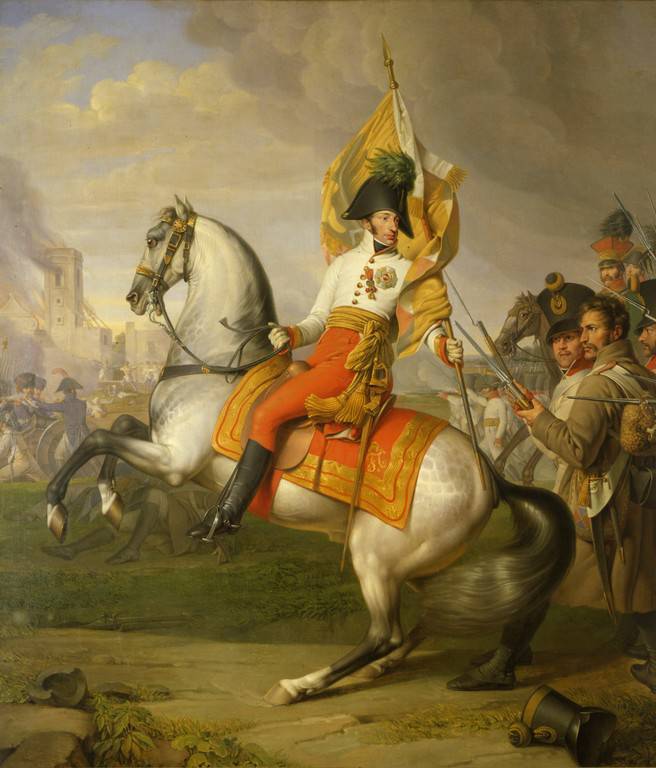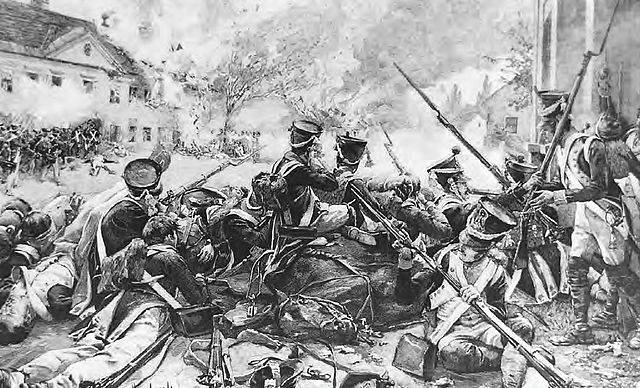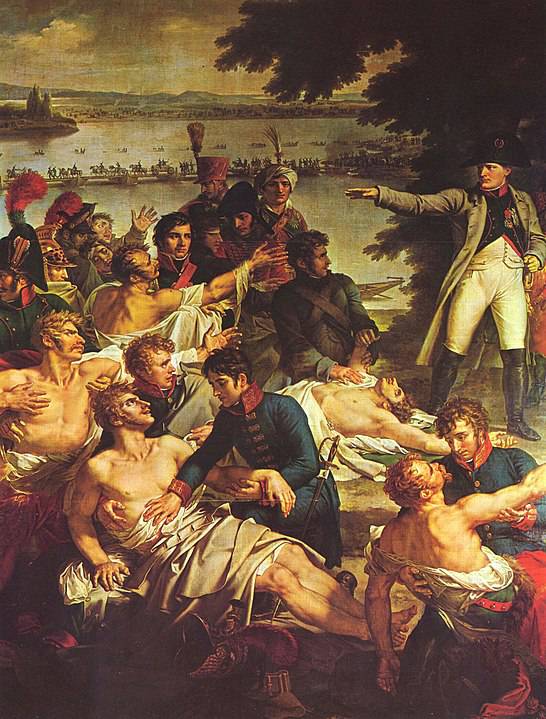
Parfois appelée bataille d'Aspern-Essling ou bataille d'Aspern, est une bataille qui mit aux prises les troupes françaises et autrichiennes, dans la banlieue de Vienne, du 20 au 22 mai 1809. Considérée par les Autrichiens comme une victoire et par les Français comme un échec provisoire, elle se solda par la perte d'environ 45 000 soldats (morts, blessés, prisonniers) des deux armées, et en particulier, du côté français, par celle du maréchal Lannes, mort le 31 mai des suites des blessures reçues le 22.
En 1809, l'Autriche, voyant Napoléon embourbé dans l'interminable guerre d'Espagne et sentant son alliance avec la Russie fragile, pense utiliser le meilleur moment pour effacer l'humiliation d'Austerlitz et le dur traité de Presbourg qui s'ensuivit. Alors que l'Autriche passe à l'attaque en Bavière, Napoléon parvient à rassembler en Allemagne une armée très importante, toutefois moins aguerrie que ses unités de vétérans en Espagne.
Alors que Napoléon occupe Vienne le 13 mai, l'archiduc, après avoir détruit les ponts sur le Danube, regroupe son armée à cinq kilomètres au nord-est de la capitale, à proximité de Bisamberg, une hauteur sur la rive gauche du fleuve. Les Français doivent traverser le Danube. Deux possibilités sont retenues : l'île de Schwarze Lackenau en amont de Vienne, et l'île Lobau en aval. Mais à la suite d'une manœuvre manquée du général Saint-Hilaire au matin du 13 mai, les bataillons chargés de s'emparer de Schwarzelaken sont détruits, et les Français se retournent vers Lobau, désormais la meilleure possibilité de passer le fleuve.
Sometimes called the Battle of Aspern-Essling or Battle of Aspern, is a battle between French and Austrian troops, in the suburbs of Vienna, from May 20 to 22, 1809. Considered by the Austrians as a victory and by the French as a temporary failure, it resulted in the loss of approximately 45,000 soldiers (dead, wounded, prisoners) of the two armies, and in particular, on the French side, by that of Marshal Lannes, who died on May 31 as a result of the wounds received on the 22nd.
In 1809, Austria, seeing Napoleon mired in the interminable war in Spain and feeling its alliance with Russia fragile, thought to use the best moment to erase the humiliation of Austerlitz and the harsh Treaty of Pressburg that followed.
While Austria goes on the attack in Bavaria, Napoleon manages to gather in Germany a very important army, however less battle-hardened than his units of veterans in Spain. While Napoleon occupied Vienna on May 13, the Archduke, after having destroyed the bridges over the Danube, regroups his army five kilometers northeast of the capital, near Bisamberg, a height on the left bank of the river. The French must cross the Danube. Two possibilities are retained: the island of Schwarze Lackenau upstream of Vienna, and the island Lobau downstream. But following a failed maneuver by General Saint-Hilaire on the morning of May 13, the battalions responsible for seizing Schwarzelaken were destroyed, and the French turned towards Lobau, now the best possibility of crossing the river.









